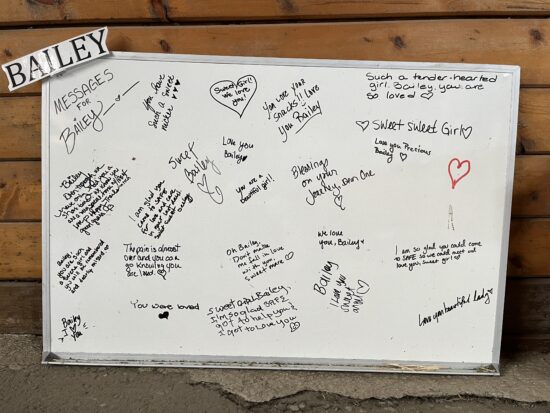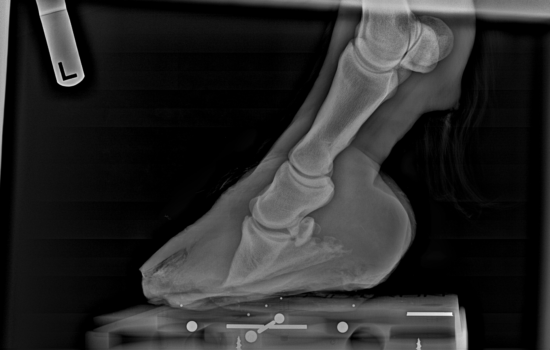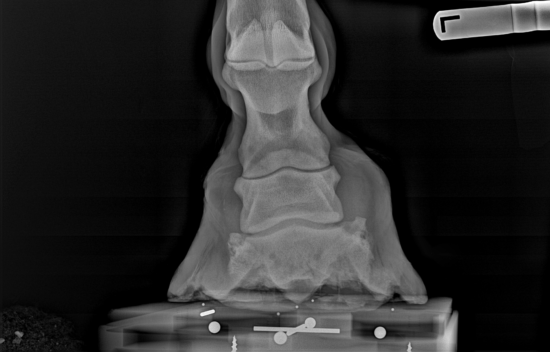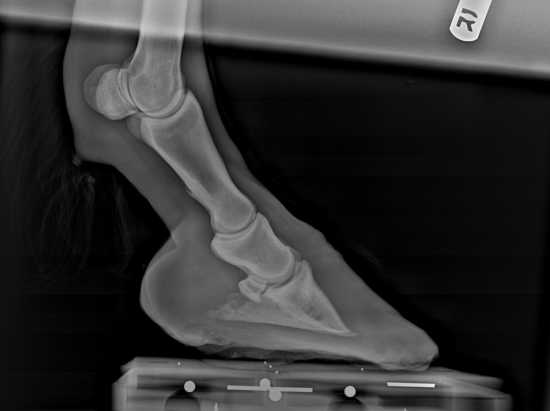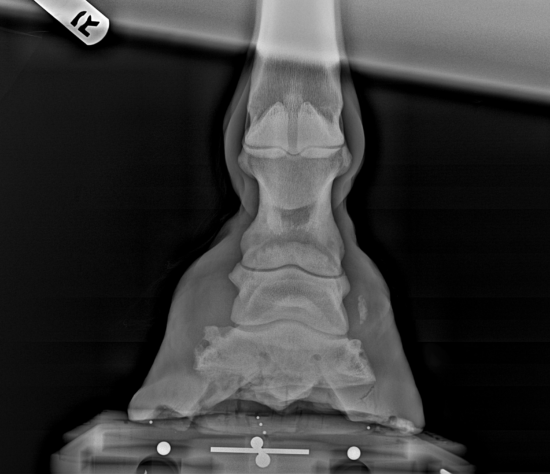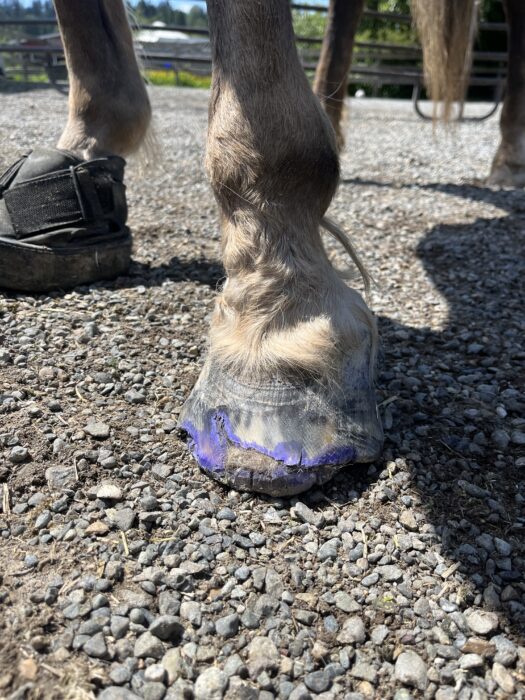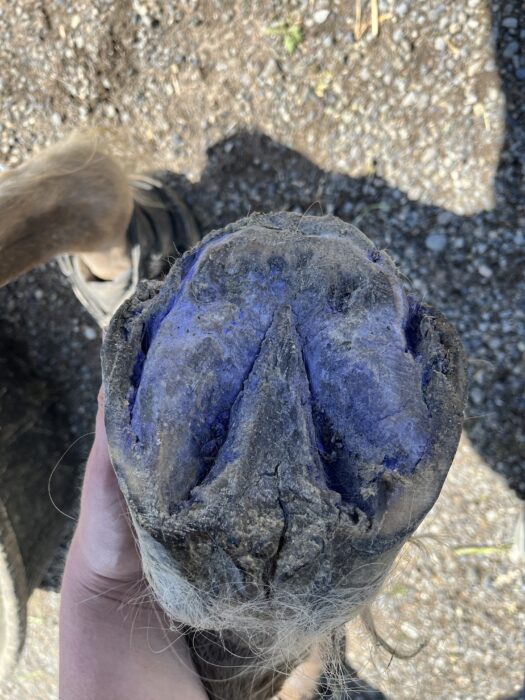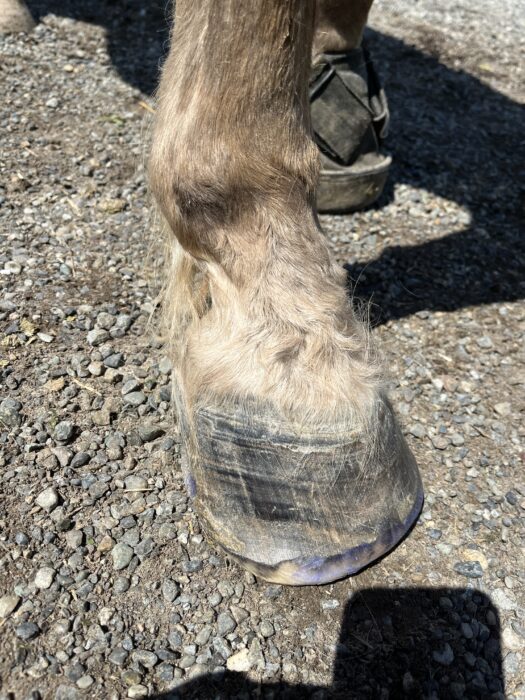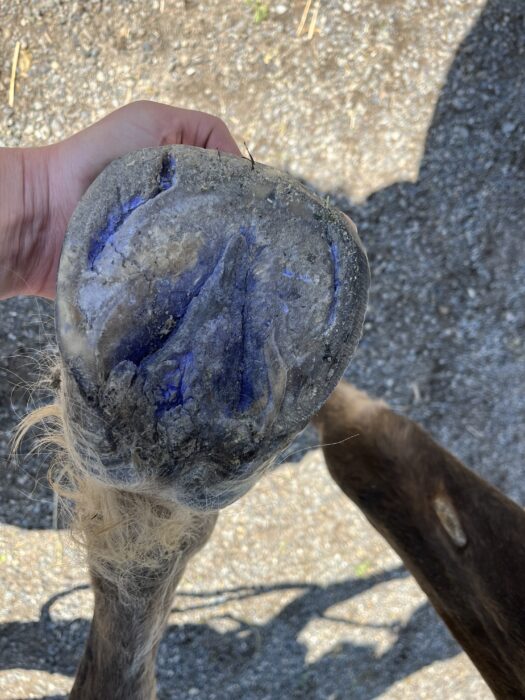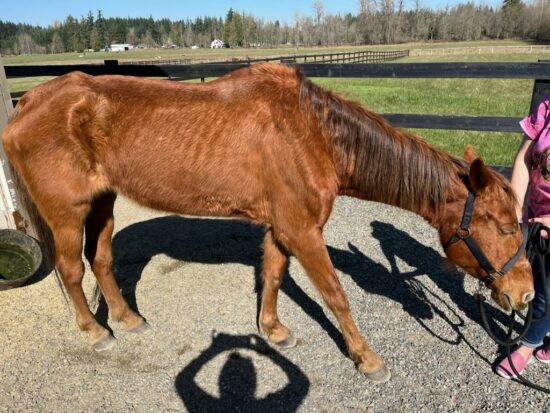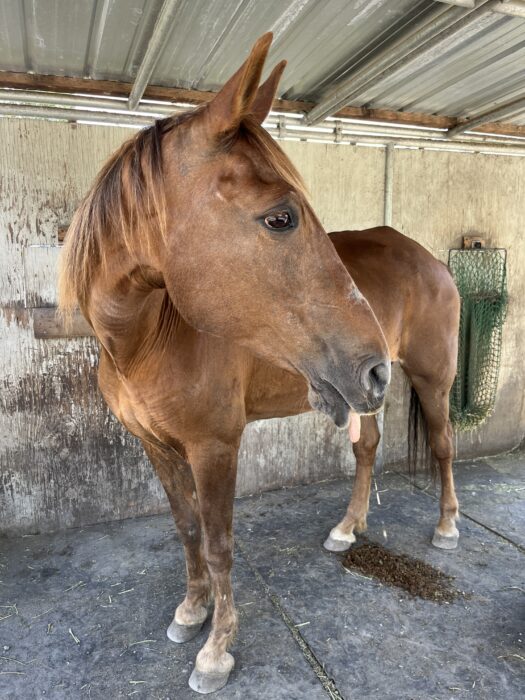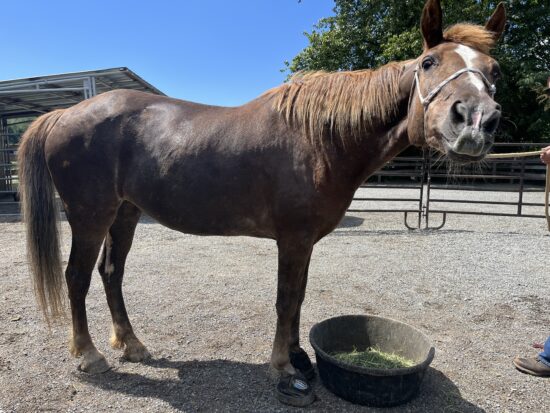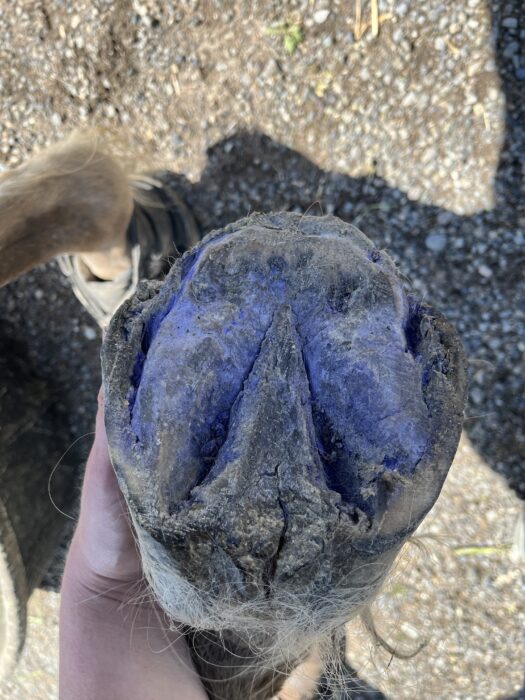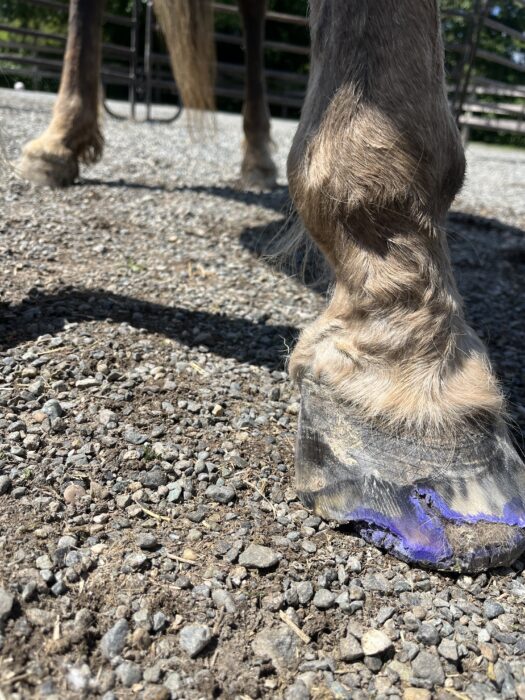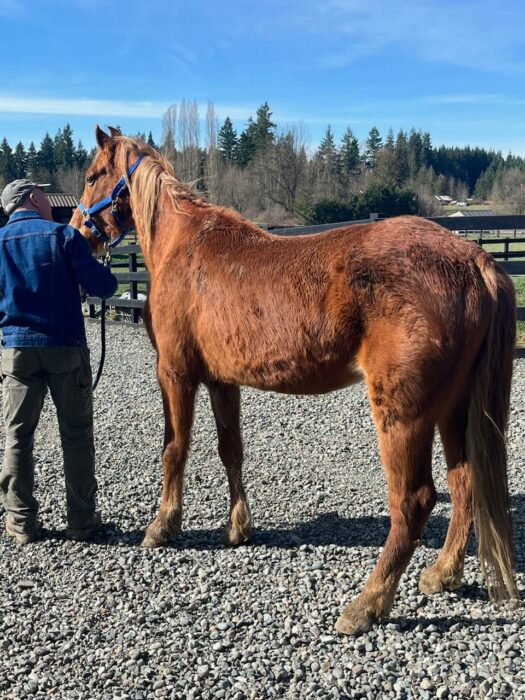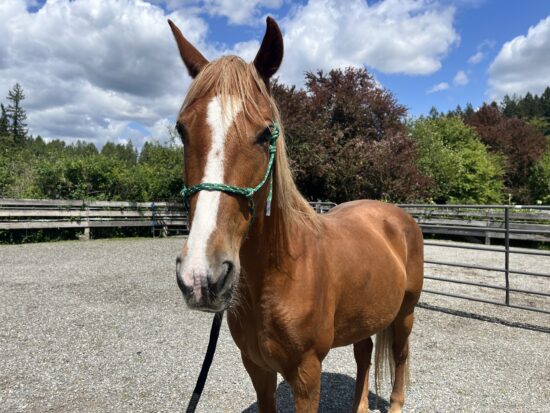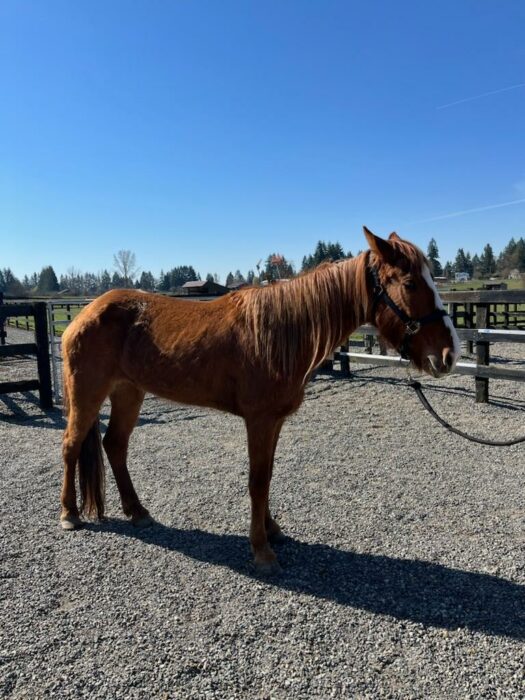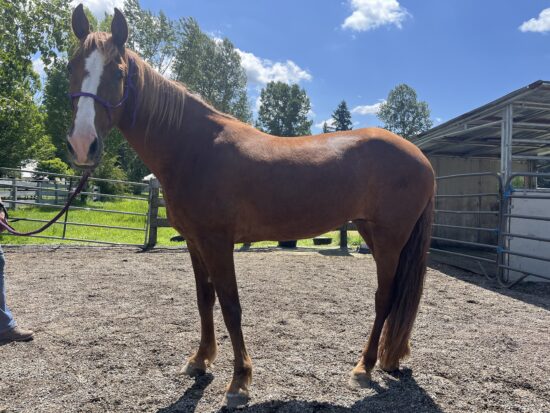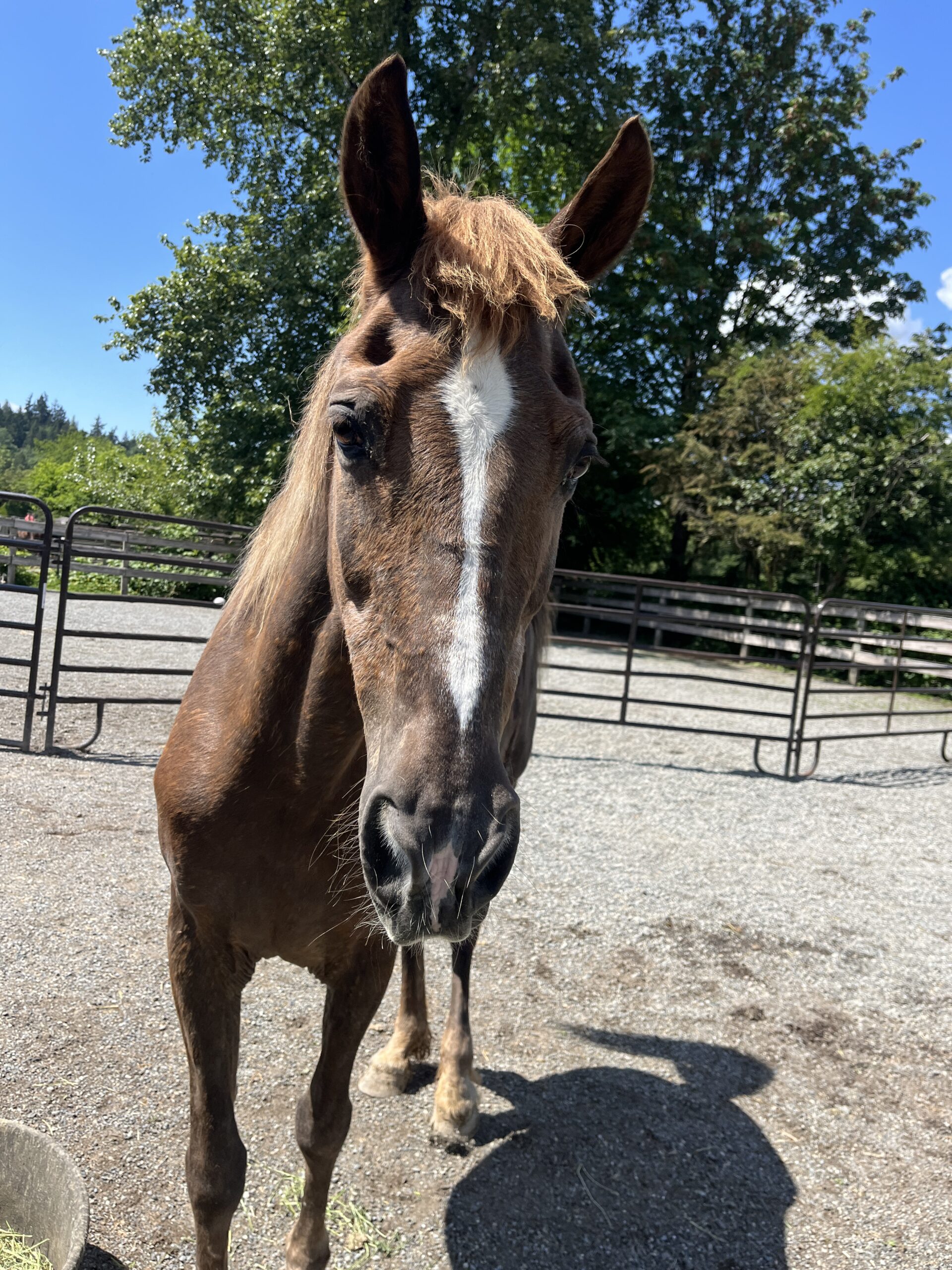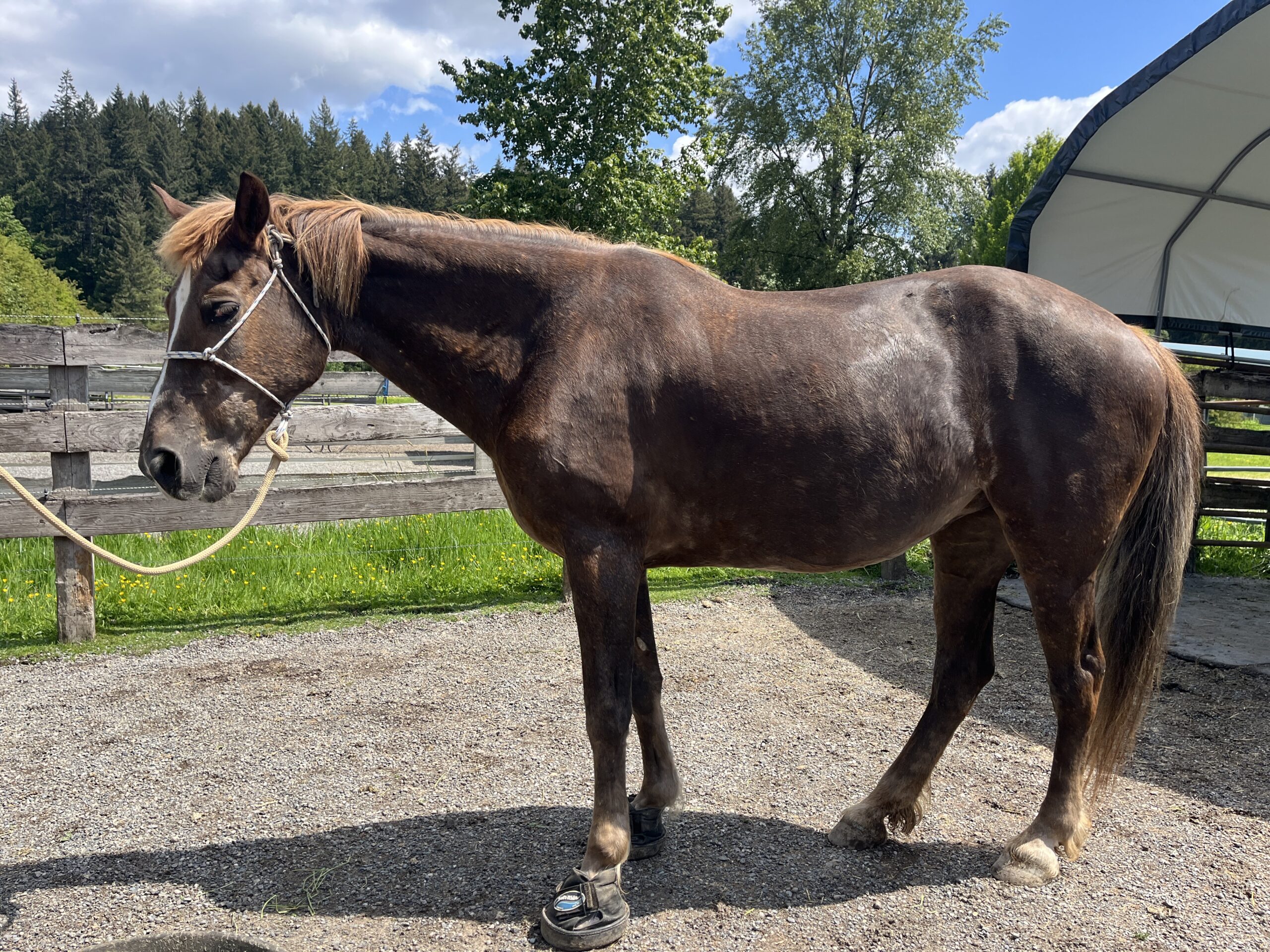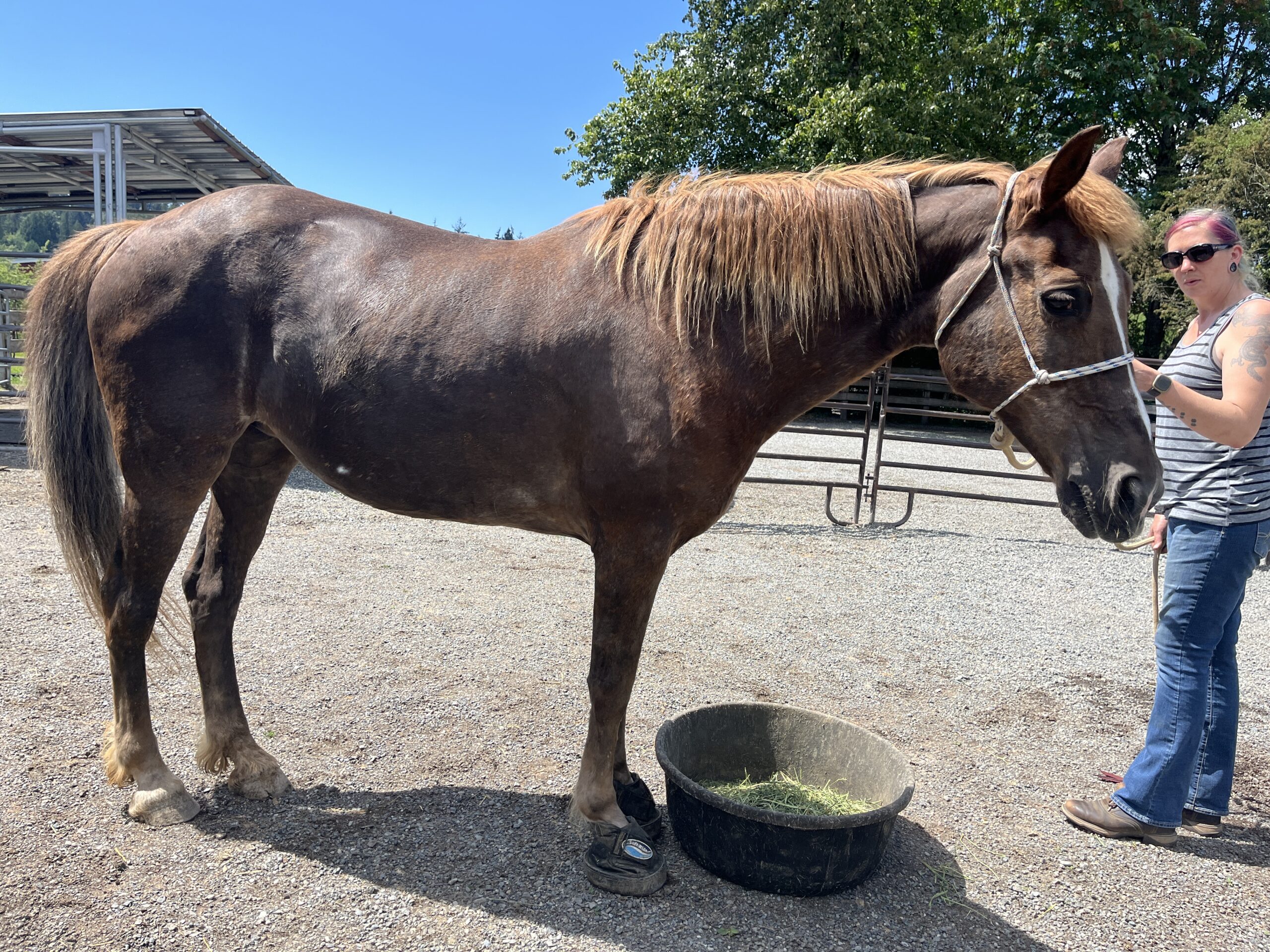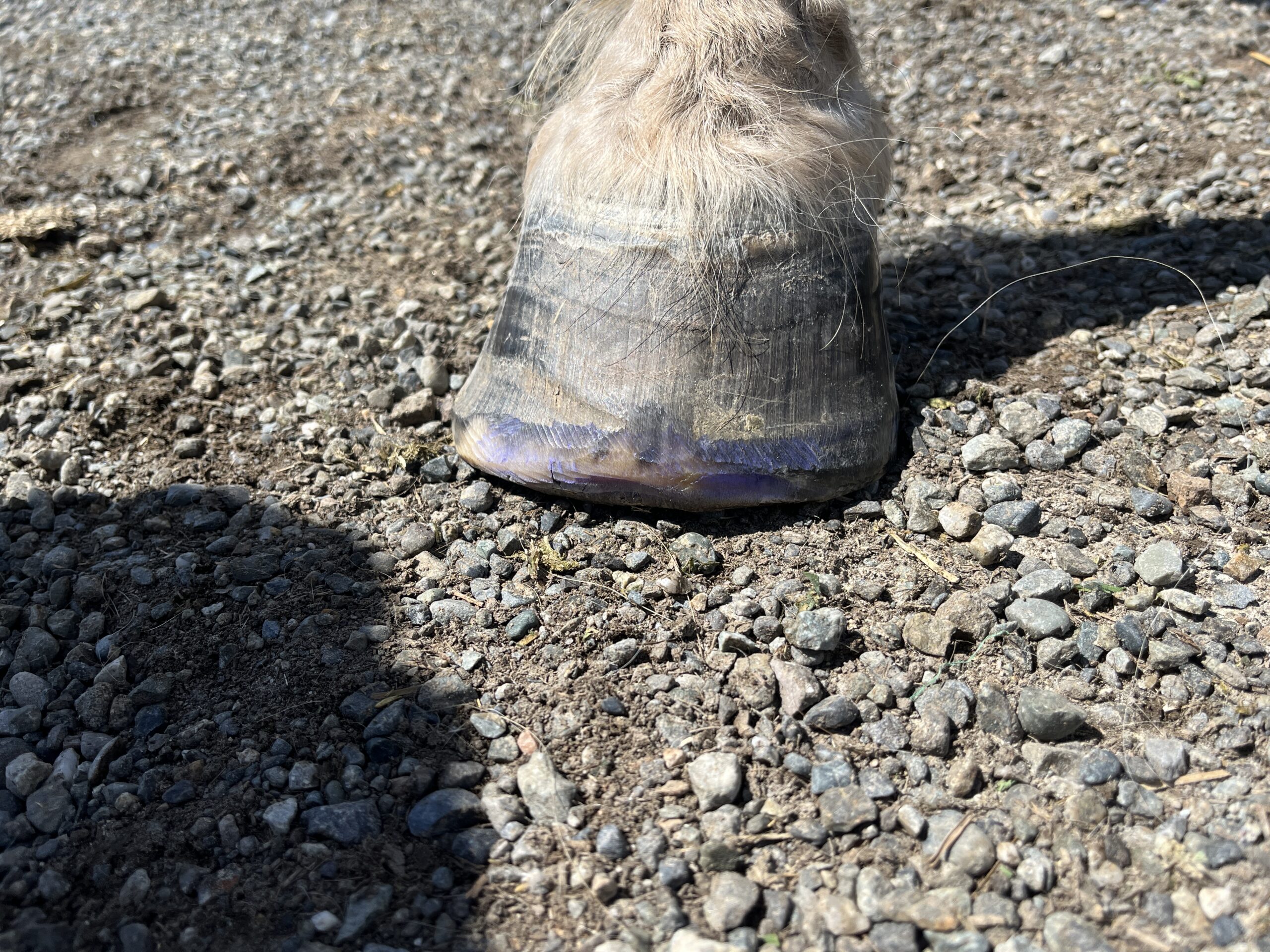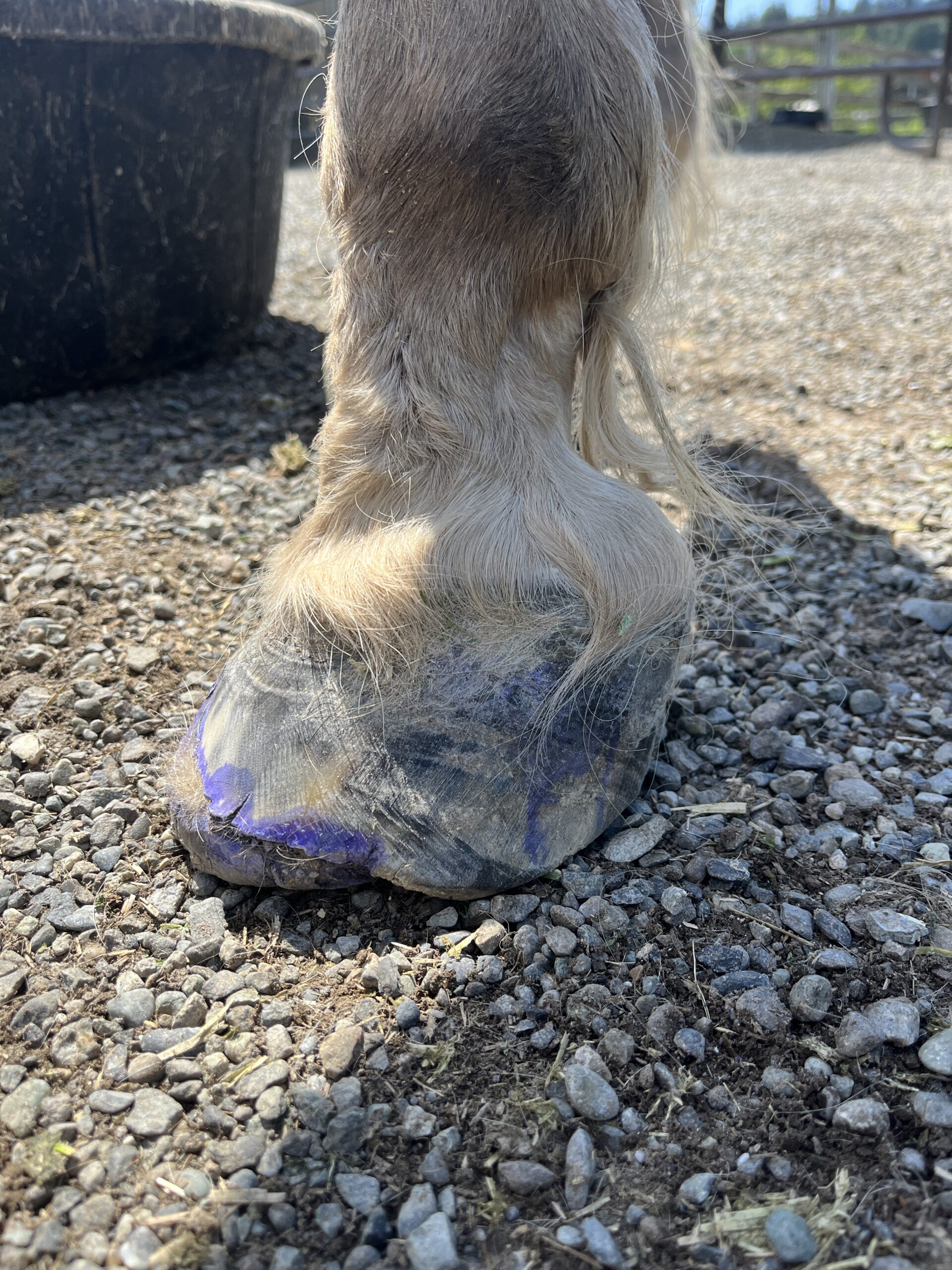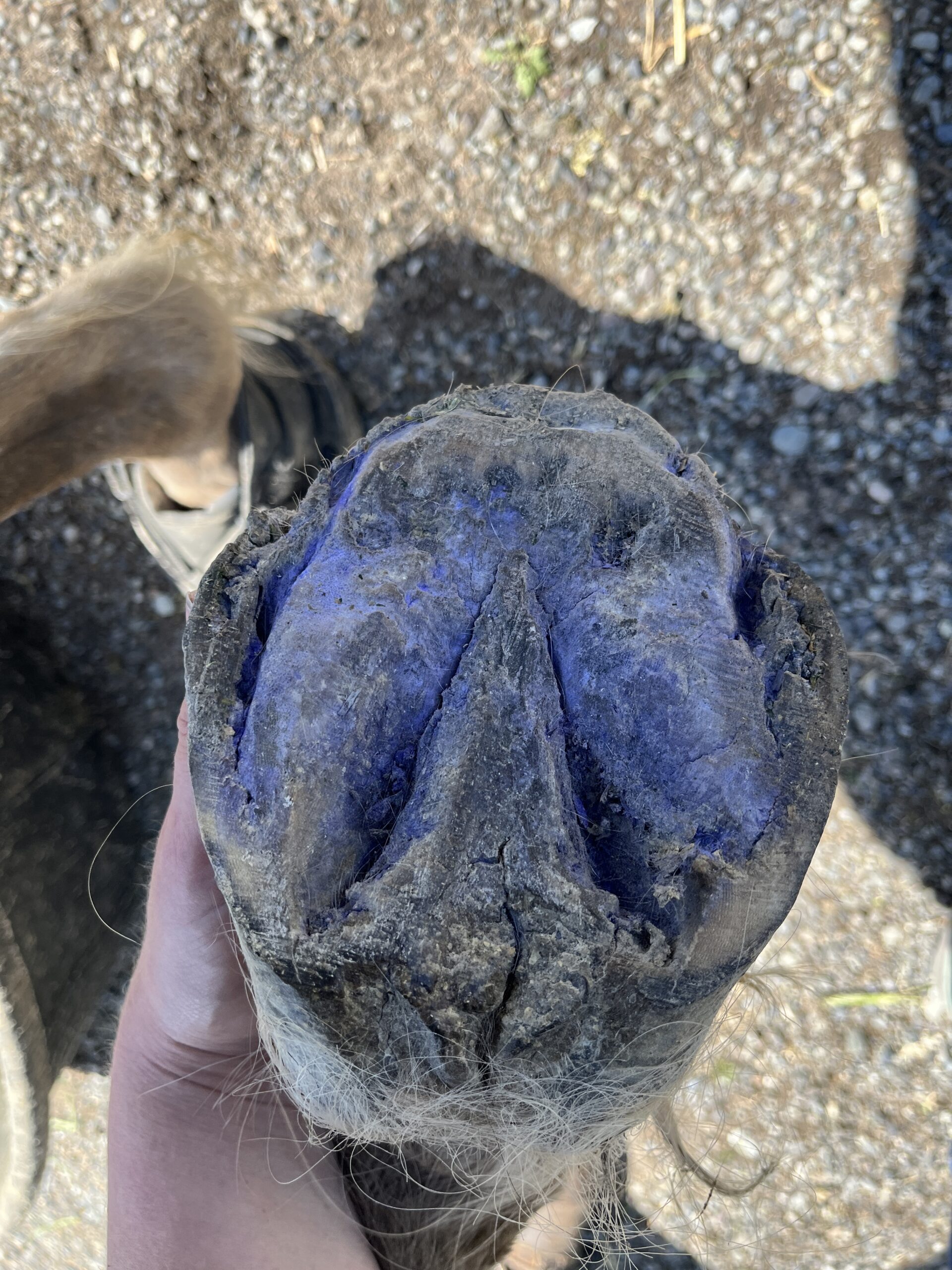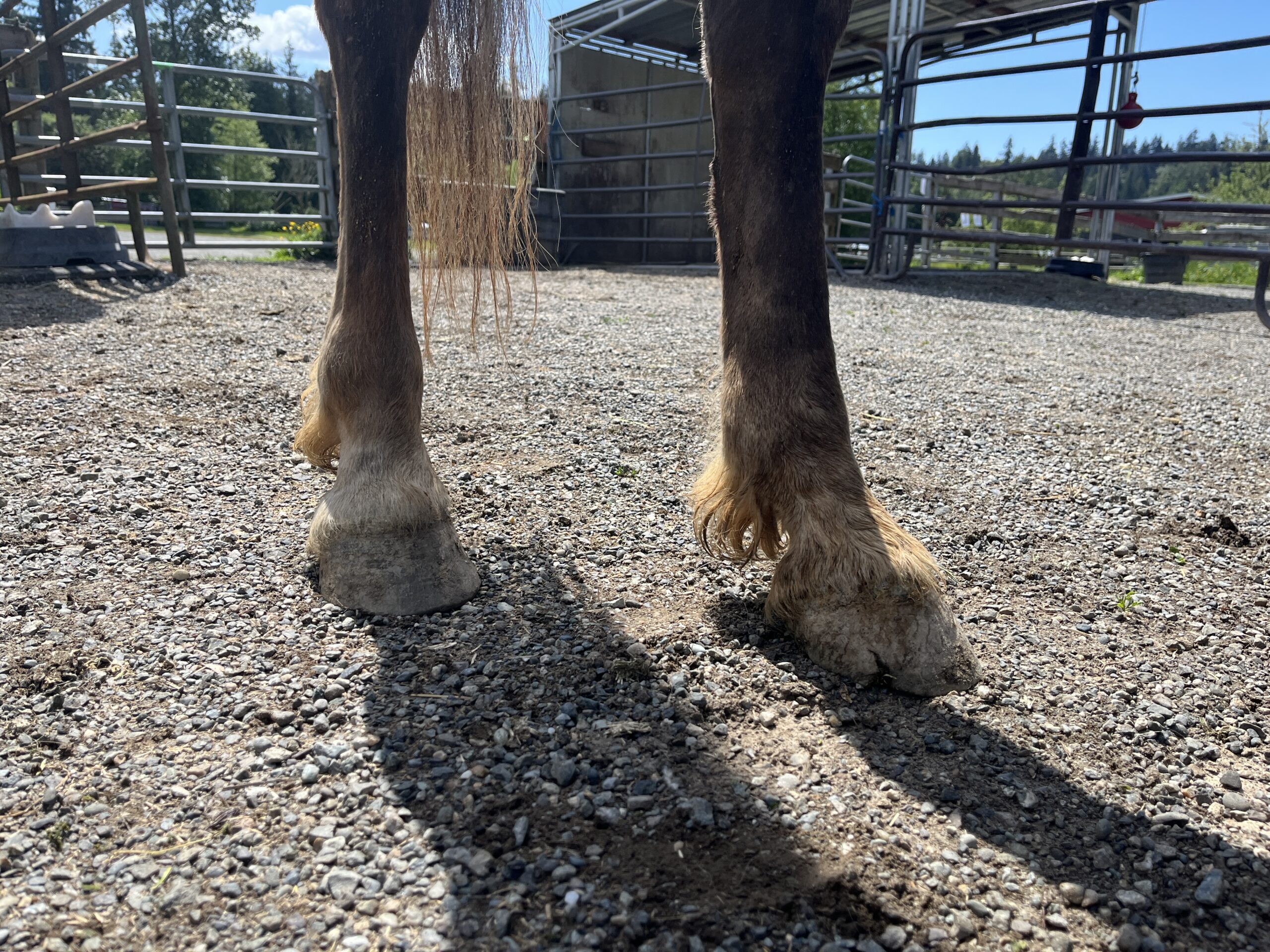Bailey
1993 Chestnut Tennessee Walking Horse Mare
Type of Rescue: Animal Control Surrender
Intake Date: 5/17/2024
Date Deceased: 6/10/2024
Length of Time with SAFE: 1 month
Bailey was part of a four horse Pierce County Animal Control seizure in early 2024. On seizure, she was emaciated, with a history of laminitis that left her front feet in seriously bad condition. Through the work of Pierce County Animal Control, her foster, and the vets at Tacoma Equine, Bailey improved from the condition in which she was first seized. However, we knew that Bailey’s front feet would be an ongoing concern.
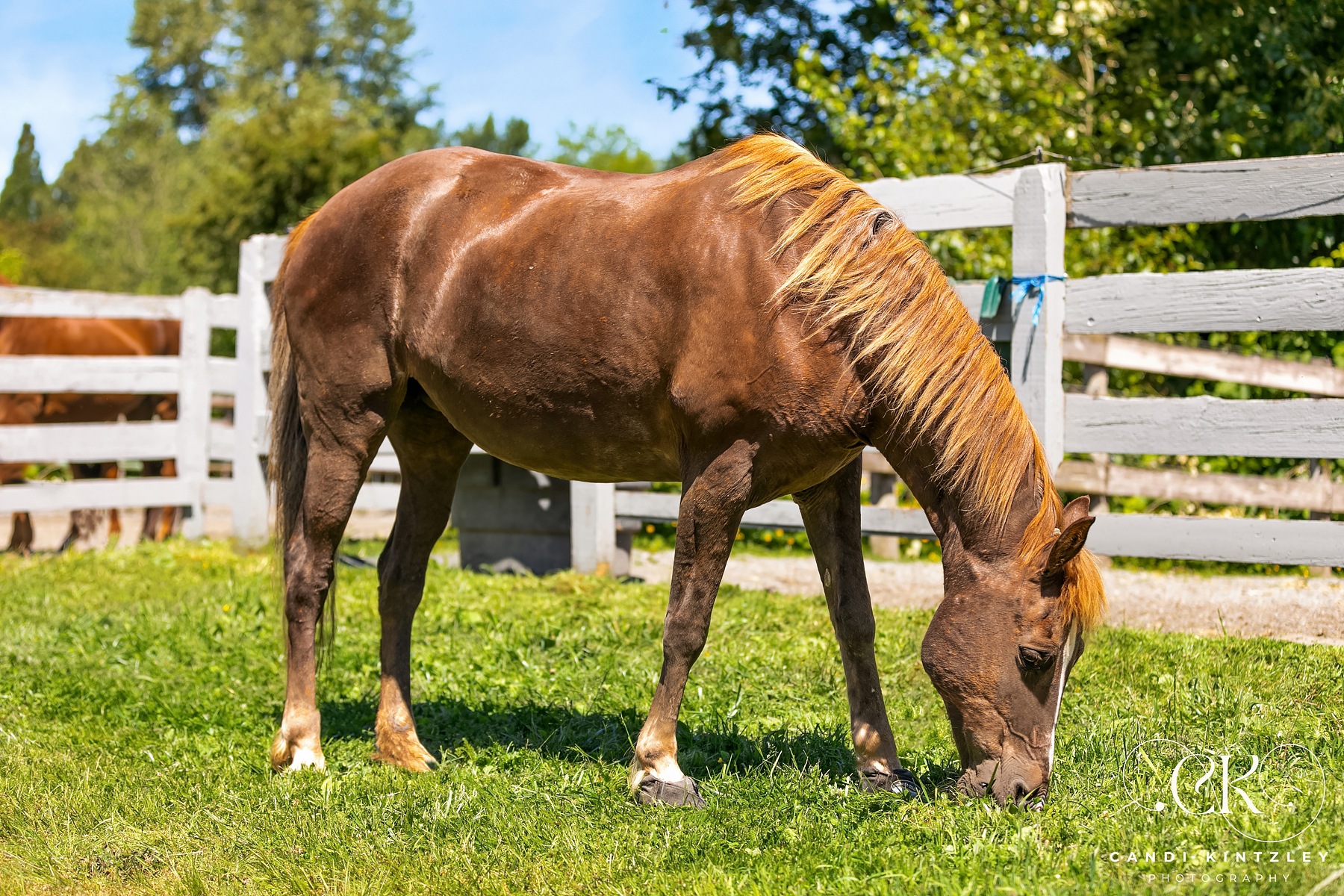
Run Free, Bailey
Yesterday, as the sun shone overhead and a warm breeze blew, we said goodbye to Bailey. While she might not have been at SAFE for very long, she was well fed, well cared for, and well loved during her time with us. You’d be hard pressed to find a sweeter mare, and even with the visible pain she was in due to the rotation in her front hooves, she never lost her sunny disposition.
Since her rescue, Bailey had struggled with comfort while walking. X‑rays showed rotation in both her front feet causing discomfort and pressure on her coffin bones. We had been managing her pain by wearing comfort orthotic boots and a daily dose of Equioxx, but at the end of May she experienced a severe laminitic flare-up. The pain was so intense that she refused to move around her paddock, and her heart rate and respiration skyrocketed. Thanks to the attentive eyes of our barn staff, we quickly called our vets out for an emergency visit. They recommended switching her medication to the stronger Bute, which only marginally improved her comfort. Even upping the dosage from 2 to 3 grams a day, she was still head-bobbing and lame at the walk, in the boots. And although her vitals slightly stabilized following the flare, they remain concerningly high.
In light of this, we needed to make the selfless decision to prioritize her comfort. We were committed to giving her the most beautiful last week possible, where she was showered with love from all those around her (and some who took special trips out to see her).
Our wish is always that a horse like Bailey could have fully recovered and found a forever home, but whether a horse is with us for a day or years, they are always special and deeply loved by us. Bailey had endured so much pain, and we are grateful that as her caregivers, SAFE could give her the peace and dignity she deserved. Laminitis, along with colic, is one of the most horrific and painful experiences for our beloved equine friends. As stewards of these amazing animals, it is our responsibility to let them go peacefully when there are no longer possibilities for a pain-free life. We can be comforted knowing that since her rescue, Bailey had known nothing but love, kindness and respect.
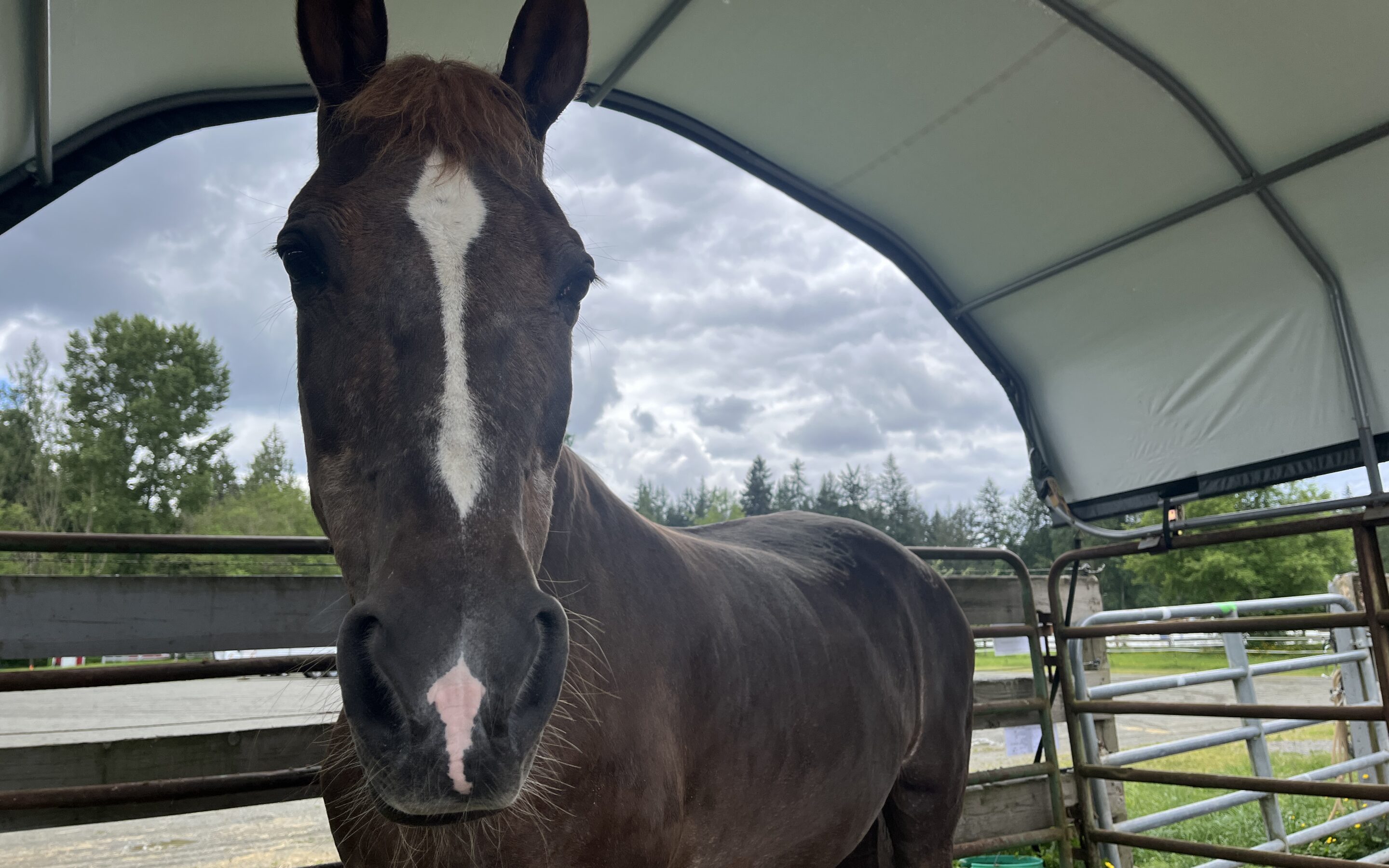
Bailey’s Troubled Hooves
The horses who arrive at SAFE are rarely in good shape. But the amount of rehabilitation each horse requires is as varied as the horse themself. Bailey arrived as part of a four horse seizure from Pierce County Animal Control. We have spoken before about what an amazing job PCAC does at beginning the rehab process for the horses who come into their care, and this group was no different. They were nearly unrecognizable from the emaciated and neglected animals who were first seized back in March of 2024. Before she even got to SAFE, Bailey and her group had amassed pages of vet reports, having been carefully monitored and checked up on many times by the folks down at Tacoma Equine. But despite having gained back most of the weight she so badly needed, and having had her other basic (and some not so basic) care needs tended to, Bailey arrived with one ongoing health issue: the condition of her hooves.
Bailey was seized with hooves that the vets described as ‘severely overlong.’ She was lame at the walk at that time, and this lameness continued even after her initial trim. She was placed on a daily dose of the anti-inflammatory medication Equioxx, and was put in a pair of soft ride boots to help with her comfort level. The boots did help to a degree, but the lameness was still present. Subsequent X‑rays of her hooves revealed both fronts displaying signs of chronic laminitis, the right front with 2 degrees, and the left front being significantly worse, with ‘severe rotation’ (<8 degrees) of the coffin bone. The sole on that hoof was also very thin, and she had significant white line separation on both feet. In the soft rides and with the Equioxx, she remained comfortable enough, but with such dramatic changes to the anatomy of the hoof, comfort is a relative term.
- Left Front
- Left Front
- Right Front
- Right Front
Bailey continued to see the farrier every four weeks to help keep on top of the reconstruction of that left front especially. There was a great deal of dead lamina beneath the hoof wall that was requiring removal, and the vet’s suggestion was to bring the heel down significantly in order to help reshape the hoof around the rotation beneath the surface. Though the hooves she walked into SAFE with looked far from perfect, they were hugely improved from where they began.
- Left Front
- Left Front
- Right Front
- Right Front
We continued Bailey’s daily regime of Equioxx, and kept her in the soft ride boots, checking them daily for debris and rocks – doing what we could to help how we were able despite her lack of soundness.
Then about a week after her arrival, we came out to find Bailey standing in her paddock extremely reluctant to move, with elevated respirations and a heart rate hovering around 60 – abnormally high. She also had a bounding digital pulse in that left front, all signs that pointed to pain. We had our vets out to assess, and they recommended we take her off Equioxx and put her on bute, a stronger option, for a few days.
We also had her seen by our farrier, who continued the work that had been started to reshape that left front hoof. The other hooves were not without their issues, including old abscess tracks and white line separation, but the left front is above and beyond the most worrisome. Her professional opinion is that it will take a great deal of time for the hoof to make a recovery, and again, when discussing laminitic changes, ‘recovery,’ like comfort, is a relative term.
Now, on bute and still in the boots, Bailey no longer has the same bounding pulse in that left front that she did, nor the same level of elevated vitals, but she still is off on that left front at the walk, and her heart rate remains on the high side of normal, which is an indication of a level of discomfort. Living on bute is not a sustainable option, but in the interest of her comfort we are keeping her on it for the time being. We are keeping a close and careful eye on Bailey, and keeping in regular touch with our vets, to ensure that we are doing what we can to help her in the capacities in which we are able. Bailey may not have perfectly aligned coffin bones, but what she does have is a large group of people who love and care about her, and have her well-being at the forefront of our minds.
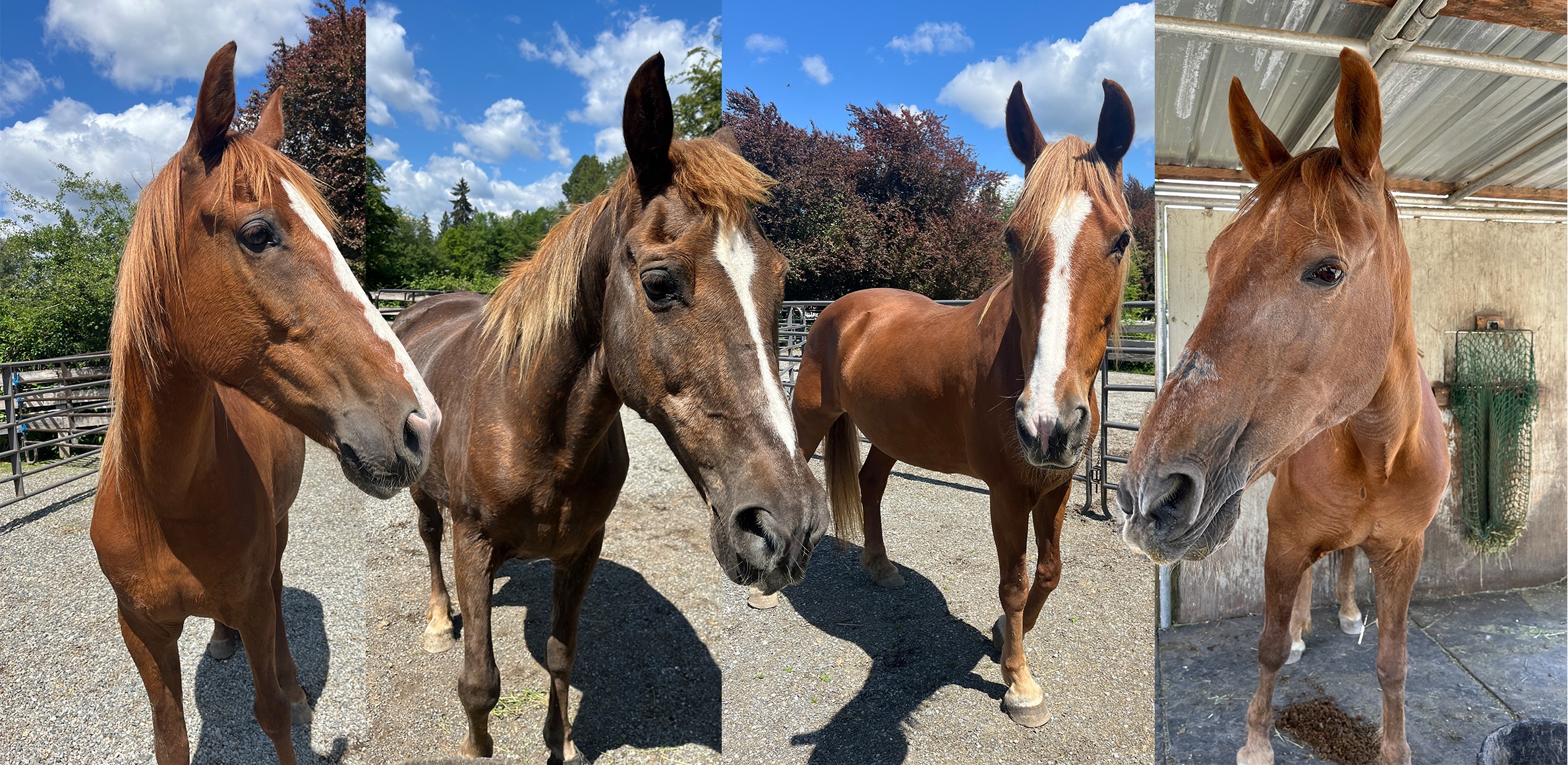
Walkin’ Into SAFE: Zuri, Bailey, Cleopatra, Deja Vu
Four new mares Tennessee walked into SAFE last week: Zuri, Bailey, Cleopatra, and Deja Vu.
Their story is one of neglect, as is so often the case with our new intakes, but as they were seized by out friends down at Pierce County Animal Control, they have been in very good hands since they were first rescued. The girls were all tremendously thin before they were taken, with body condition scores in the 1–3 range. Cleopatra, who was in the best shape (a relative term), had only held on to her little bit of extra weight by being food aggressive. No horse should have to fight for a meal.
For the last few months, they have been rehabbing down south, but last Friday made the trek up to SAFE. So far, everyone has been settling in well here, enjoying at least five meals a day, and getting to know the routine and the volunteers who already adore them.
Zuri and Bailey are the two matrons of the group, neither a stranger to being handled. Word is that they were show horses, once upon a time, and they do have a ‘been there, done that’ worldliness about them.
Zuri is likely 30, and was in some of the worst shape of them all. She has gained a significant amount of weight over the course of her time at foster, but there is still visible evidence of her pointiness. She has a history of colic, so we are keeping a close eye on her eating and bathroom habits (a standard across the new intake board, of course, but something that we are making sure to pay extra attention to given what we know). She is so far curious and friendly, and will greet you vocally — especially if you come with food.
Bailey is also 30 or above, and has a history of laminitis that has led to some significant rotation in her front feet, particularly her left. Bailey’s hooves were in terrible condition in general, so managing her overall comfort has been a high priority. She has been living in soft ride boots, and taking daily equioxx, both of which have been helping some. But she doesn’t let her feet stop her from being a sassy lady!
During her intake photoshoot, Bailey was quick to remind us that she would much rather be chowing down on her alfalfa, thanks very much. She is a hoot!
Cleopatra is 20, and as previously mentioned, looks the best out of the four. Despite her food aggressiveness with other horses however, she is rather shy around humans. While she does allow you to halter and touch her all over, she is clearly uncertain at times. It will be wonderful to see her come out of her shell a little once she settles in more here at SAFE.
Deja Vu, so named because of her physical similarity to Cleopatra, follows her doppleganger’s personality thru-line as well, being perhaps the most wary of the group. Still, she is not untouchable by any means, and allows for haltering and blanketing, but is definitely hyperaware of everything that is happening. Though we do not know if Cleo and Deja have riding backgrounds, signs point to ‘no.’
All four ladies are settling in well at SAFE, where they are growing used to the rhythms of this place. One thing is for sure, they already know the sound of the food truck!

